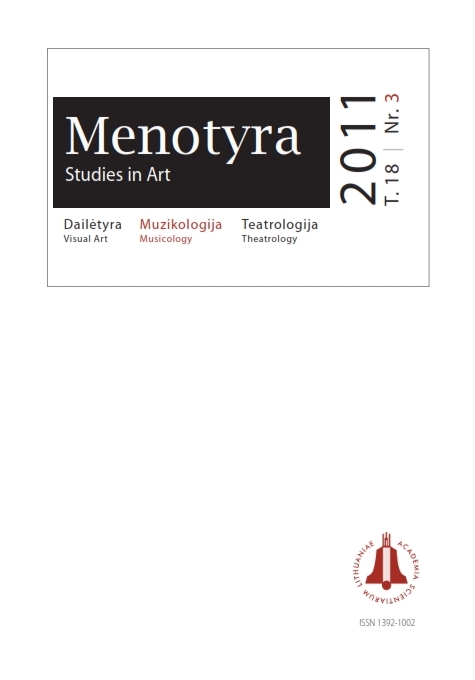Apie XVIII–XIX a. sandūros muzikinį Lietuvos miestelėnų repertuarą
Regarding Lithuanian urban music repertory at the junction of the 18th–19th centuries
Author(s): Laima KiauleikytėSubject(s): Education, Fine Arts / Performing Arts, Cultural history, Music, 18th Century, 19th Century
Published by: Lietuvos mokslų akademijos leidykla
Keywords: music in Tsarist Lithuania; urbanization of music culture; urban music movement; music repertory; musical pedagogical literature; performer art, publisher Zawadzki; musical score dissemination
Summary/Abstract: The article deals with the topic of the past of the urban music movement undeservedly abandoned by Lithuanian music historians. This time the issue of urban music repertory of the late 18th century and the first decades of the 19th century was chosen as the subject of the publication. The scientific aim of the author was to find out the most typical features of it. Attention was drawn to documentary sources that were little treated from the viewpoint of this discussion, namely to the data on trade in musical scores. It is stated that the Lithuanian urban music culture of the surveyed period was prospering, diverse and Europe-related. The pedagogical literature, considered as an aid to self-education and teaching, acquired special importance at the turning-point of music culture urbanization. The prevalence of church choirs and manor orchestras was overcome by chamber playing that was suitable for town-dwellers and required a distinctive repertory. The exchange in musical scores shows that, at the junction of centuries, the topography of Lithuanian music playing , social environment, forms and genres of playing as well as selection of musical instruments changed with meaning. On a plane of pre-romantic music repertory, the reverberations of the styles of classicism and baroque are seen, and the approaching steps of romanticism are heard. The emphasis was put on the most characteristic points of the discussed music repertory, i.e. chronological timeliness, domination of chamber genres, establishment of transcriptions and positive high professional art level of performers. Therefore, the time of historical, political and social upheavals was also considered to be the time of fateful changes in the Lithuanian music movement. The article does not deal much with Vilnius music culture, researched by other authors. Any example of the presented ones is only a typical reflection on hundreds of others. The traditional methods of scientific research, namely comparison, analysis and synthesis, were used in the article.
Journal: Menotyra
- Issue Year: 18/2011
- Issue No: 3
- Page Range: 196-213
- Page Count: 18
- Language: Lithuanian

